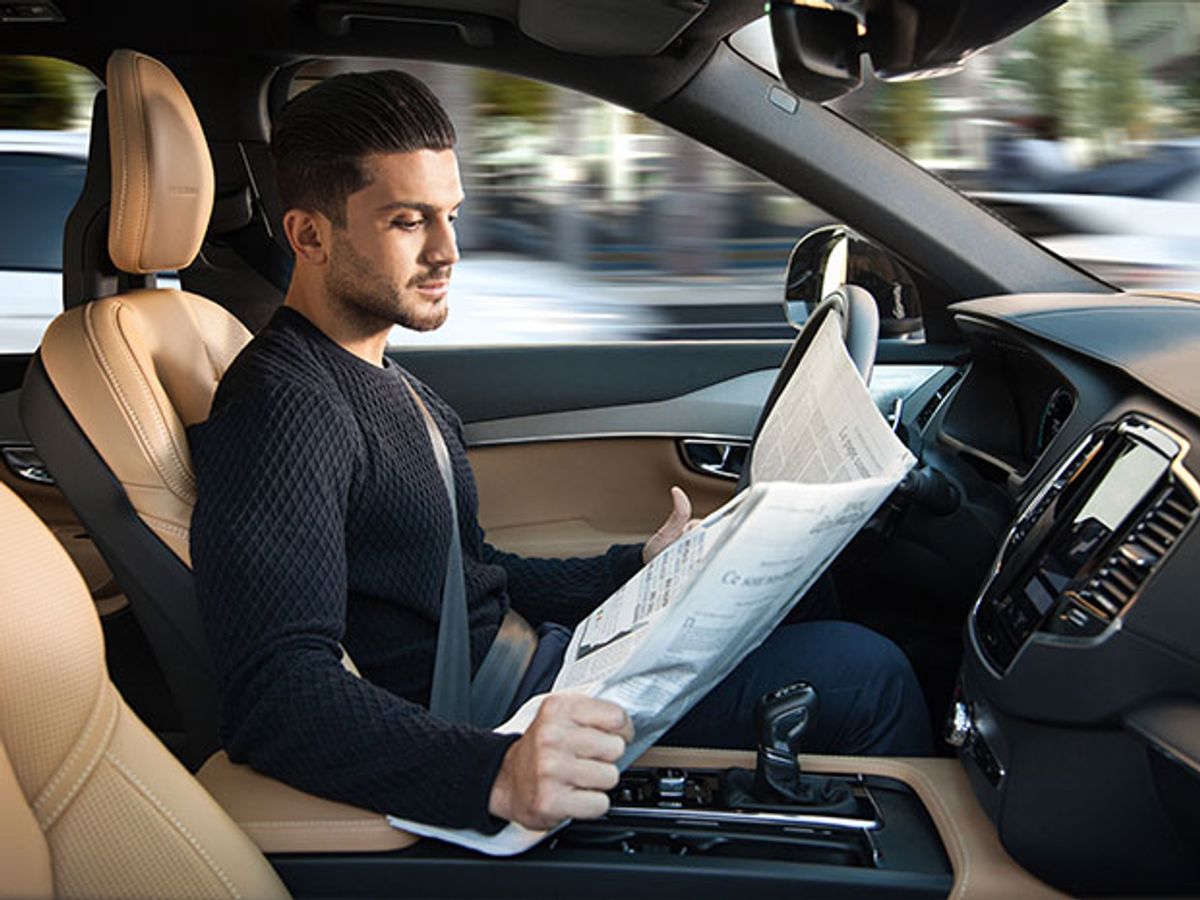Next year Volvo will do something no other company has tried: it will put 100 fully self-driving cars in the hands of customers. The tests, which will begin small and ramp up slowly, are to be held in Gothenberg, Sweden and in London.
It’s a lot harder than it may seem. True, the cars will be in self-driving mode only in the testing area and only when driving conditions permit. But they’ll be production cars, not experimental prototypes, and the drivers will be laymen, not engineers, with full ability to sit back and read a book, not continually putting a hand on the steering wheel to prove they’re capable of intervening at a moment’s notice. There’s no human being to serve as backup.
So far, driver-assistance features have enjoyed the inherent redundancy that comes from having a human being behind the wheel. “If antilock brakes fail in a car today, the driver steps on the brake,” says Erik Coelingh, a leader of the project. “In a self-driving car, if ABS fails you need a backup ABS. You need two systems for everything.”
Volvo, a brand with the word “safety” inscribed in it, is insisting on full backup for every element before it allows one of its cars full command. Take the company’s latest active safety feature, an emergency steering system in the 2017 S90 that senses if the car’s about to leave the road and takes control. And, if the motor that’s supposed to twist the wheel should fail, there’s a backup.
“There are two separate windings—essentially two independent motors in an integrated package,” Coelingh says. “Each winding has its own ECU [electronic control unit], its own power source, its own battery.”
What everybody in the business agrees on is the need for redundant sensing systems. “You have to combine sensors with different physical principles and combine them to compensate for each one’s disadvantages,” he says. “Radar is very much becoming a commodity; camera vision is developing really fast, in part thanks to the development of deep neural networks; and lower-cost LIDAR is coming.”
Volvo’s test cars in Gothenberg and London will each have a small LIDAR unit from an unspecified vendor. The unit will be integrated inconspicuously into the front of the car from where it will scan the road with four beams, unlike the rotating beacons seen on the roofs of Google cars. It will cost far less than the $10,000-plus price of those beacons, also.
High-definition maps of the Gothenberg roads should offer 10-centimeter (4-inch) resolution. Right now the maps are drawn in-house, but when the time comes to expand beyond Gothenberg Volvo will rely on other methods. “In the long run we’ll need crowdsourcing to get up-to-date information on road conditions,” Coelingh says. “We ran a big pilot this winter that used hundreds of cars to measure road friction, sending every reading of slippery conditions to the cloud, so that other cars could share it.”
Such real-world validation is key. “You have to drive quite a lot to make sure that automatic steering doesn’t kick in when you’re not about the leave the road,” he says. “If we get less than one accident in 500,000 kilometers of driving, that’s sufficient.”
Every step will involve voluminous testing, first under relatively propitious conditions and then progressing through more challenging ones. Volvo hopes the Gothenberg tests will lead to a rollout of a commercial product sometime around 2020, though even that futuristic vehicle won’t work on all roads or under all weather conditions. Not at first, anyway.
And when Volvo does sell a self-driving car, Coelingh says, it will accept full legal responsibility for any accidents that may come. “And that is reasonable,” he says, “because we told the customer he could do something else while the car drives itself.”
Philip E. Ross is a senior editor at IEEE Spectrum. His interests include transportation, energy storage, AI, and the economic aspects of technology. He has a master's degree in international affairs from Columbia University and another, in journalism, from the University of Michigan.



